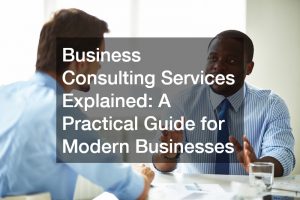For every business, the workforce is the background, the meat, and the muscle of any known company. Even when most business processes and work are automated these days, without an available workforce, it’s going to be hard to say that a particular organization can be productive.
Every business-oriented individual wants to be successful — both at an organizational level and at an individual level. Most successful companies will often treat their employees right since they know that most manual tasks will require manual supervision. This is especially true in various consumer industries when workers will need to check for the quality of products before approving them for the public market.
Still, it’s crucial to know how to maximize the potential of every workforce. Although there’s going to be a certain point that productivity might slump, good management will always be quick on its feet in addressing matters in the workplace.
Being able to address employer-employee dynamics usually takes a fair amount of skill. But what can we do to for the workforce and give them the much-needed boost? Here’s what you’ll need to know.
Why Causes a Decrease in Performance?
There’s a wide variety of reasons why most individuals underperform when they’re in the workplace. One of the best places to start with improving your workers’ performance is by sitting down and listening to their grievances and concerns. By doing so, you’ll be able to identify critical issues that might hinder your workers’ capabilities.
Some reasons include:
- Low pay
- Lack of equipment
- Work safety
- Work hygiene
- Lack of benefits
- Compensation issues
- Lack of communication
- Differences in personal opinions and company views
It’s essential to also keep a keen eye on early signs of a decrease in productivity. One of the most common signs is excessive tardiness and changes in schedules and attendance.
You don’t necessarily have to be blunt or frank with your employees. One way of knowing what they’re into is merely asking them on in less-tense situations, like when you have a more informal conversation.
It’s also important to avoid favoritism, which seems quite rampant in most office settings and workplaces.

Improving Workforce Performance
Getting Into a Middle Ground
First and foremost, building a good relationship with your workforce means addressing current and pressing problems that might cause complications. Again, dissatisfaction is often the cause of a decrease and productivity, and it should be the first priority in fostering good professional rapport.
In almost any business, there’s going to be a time that employees will be asking for several types of benefits and compensations, which usually stems from dissatisfaction in the workplace. If this dissatisfaction is not curbed on time, this can be contagious and could lead to labor unions’ formation.
Of course, bringing these cases to court should be the last thing in the minds of employers. Reaching a middle ground in agreements is the best solution to having a healthy relationship with employees. You might need a legal professional who is well-versed with employee mediation laws. Having a professional in this matter can help ensure that you and your workforce will have strong bonds, which eventually increases the workplace’s productivity.
Employee Development
Of course, nobody wants to be stuck in the same position for a decade or so. Everyone wants to get an opportunity to get promoted or advance in their career. Since ambition is a big part of being career-oriented, it’s only essential that we set out sights on giving our employees a way to improve themselves, both in terms of their skill, wisdom, and knowledge on the field at hand.
If there are still gaps in the workforce, it’s important to close in on these skill gaps, where it’s easier to achieve long-term goals while still working for the company’s benefit.
Give Incentives
One way of empowering your employees is by giving incentives for doing a job well done. Incentives can take on many forms and usually make a significant impact on the individual’s performance. Whether it’s giving overtime bonuses, paid holidays, giving them transparency to their payslip, and benefits packages are some ways of keeping your workforce in a satisfactory condition.
There is a multitude of different ways of keeping employees happy and in peak condition. Essentially, most of these strategies boil down to listening to your workforce and investing in key programs that will make them happy. Even though you might have to spend more on your workforce, it is a necessary risk if you are planning on maximizing your profits. A robust professional relationship means that both you and your employees are placed in a situation where they can function effectively.







